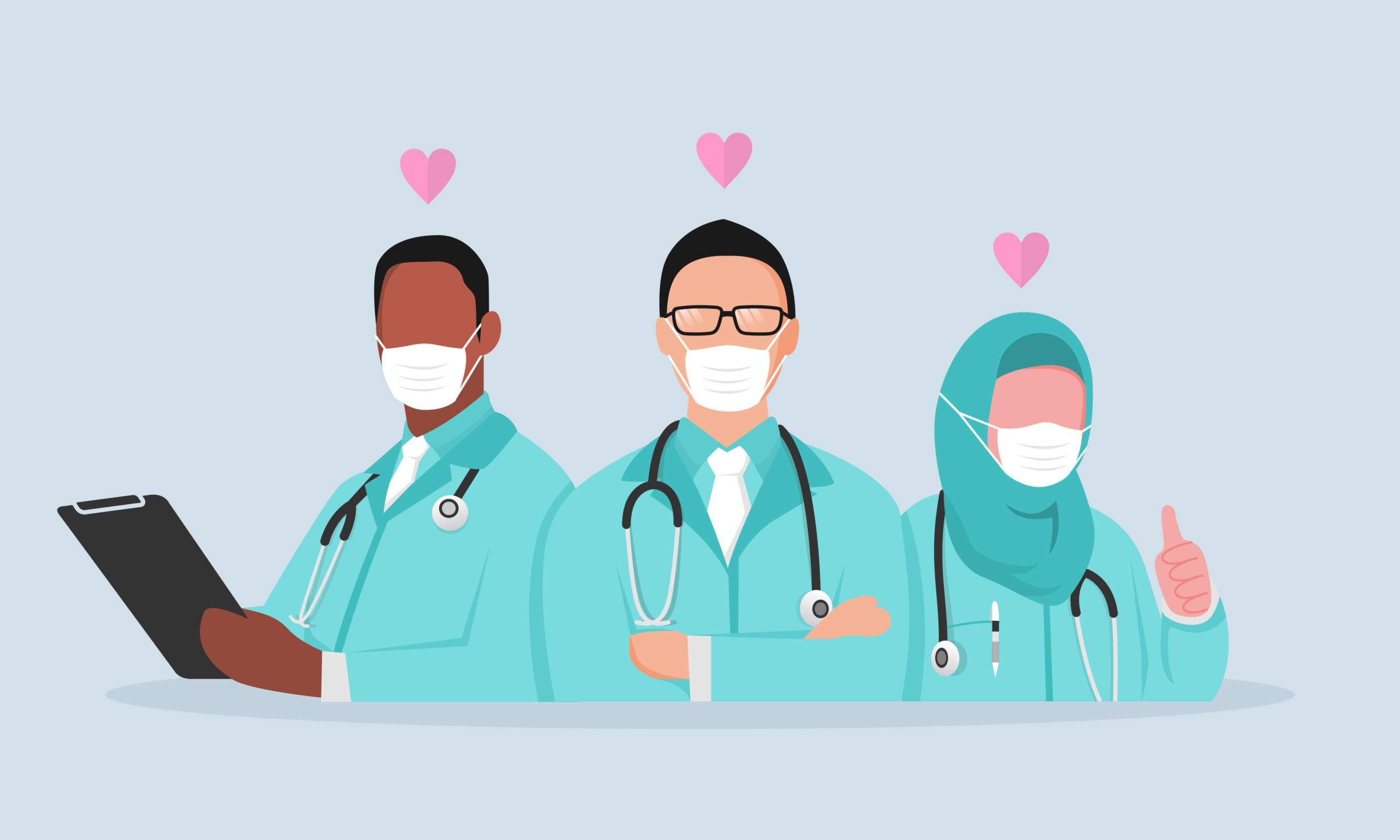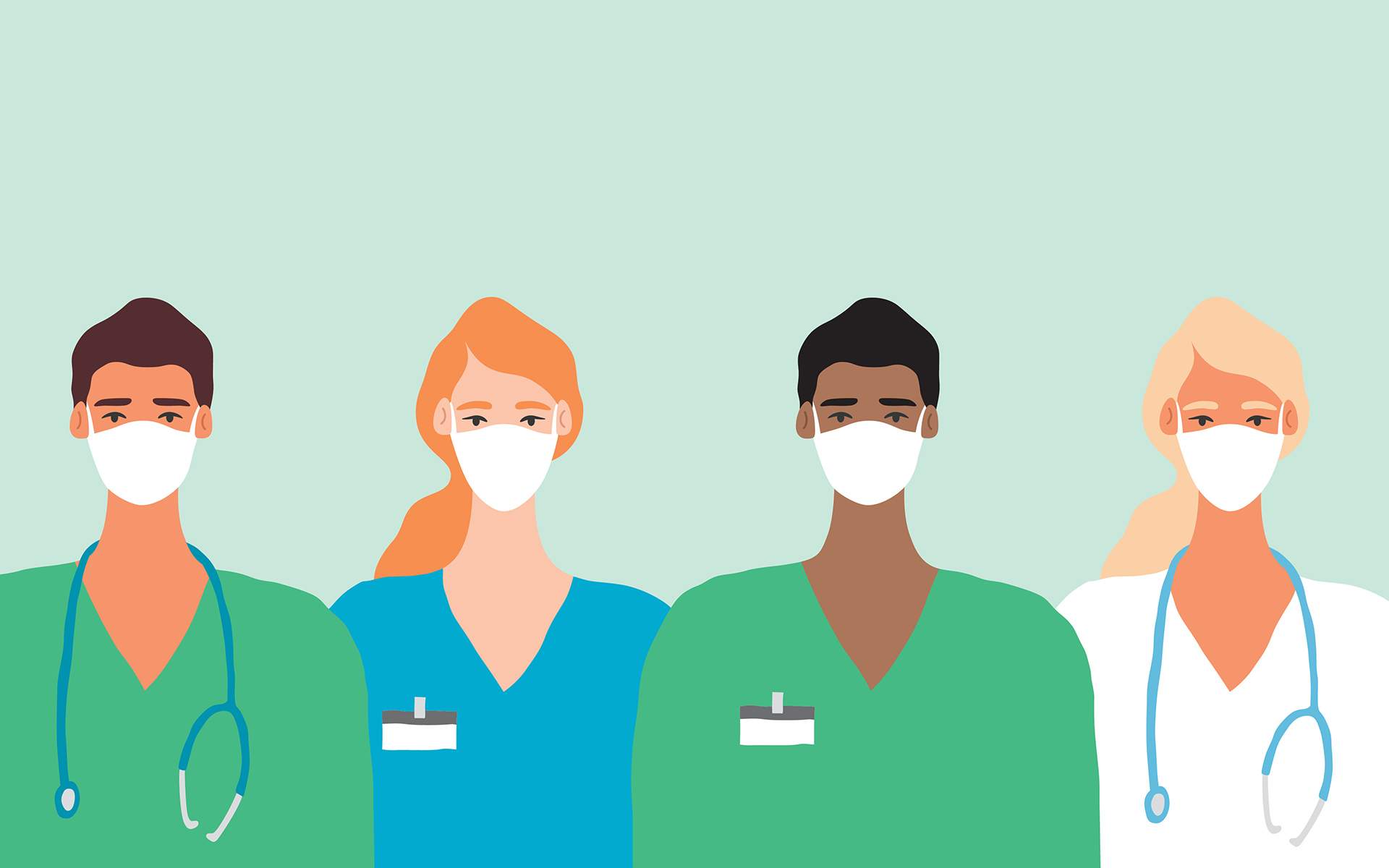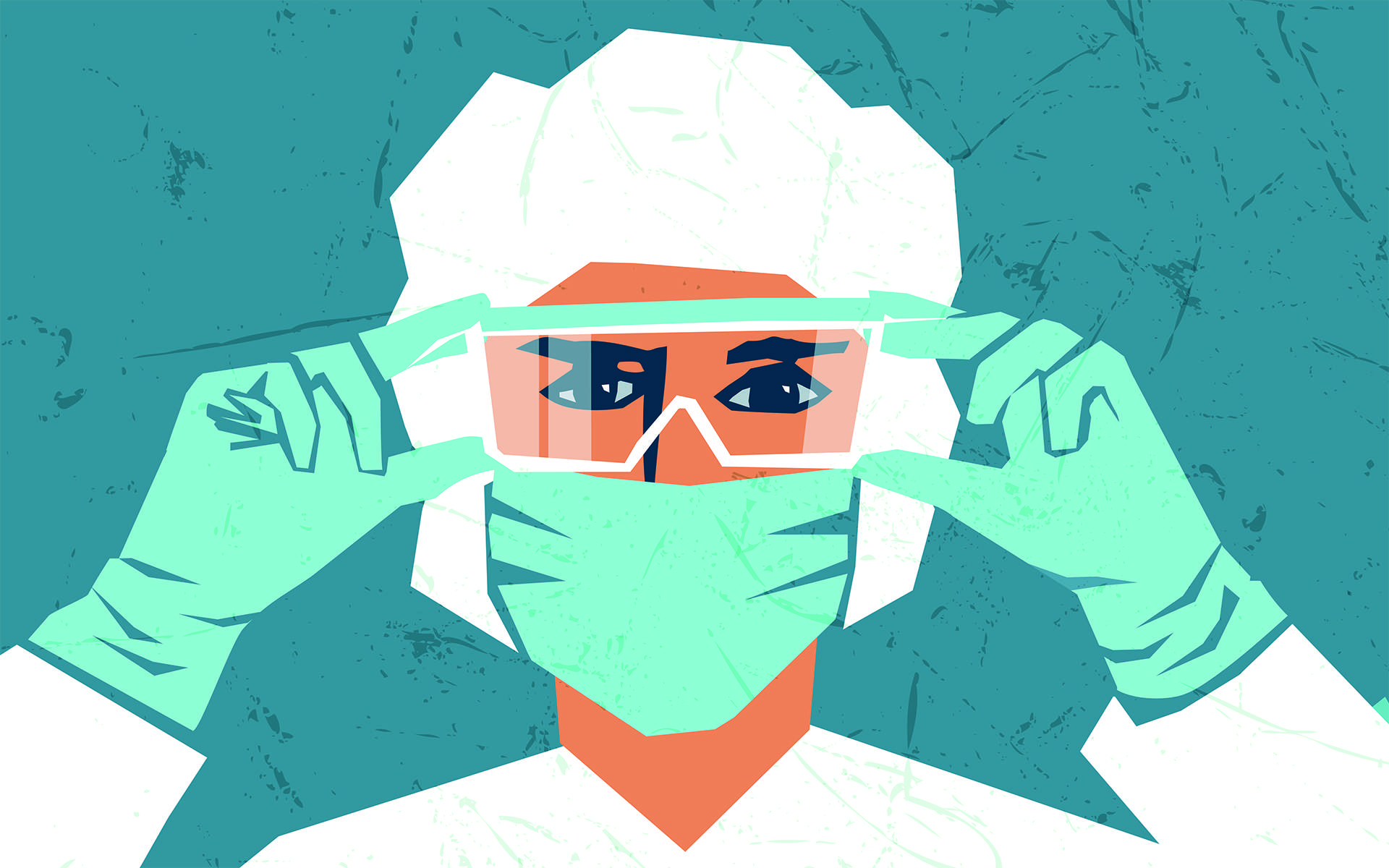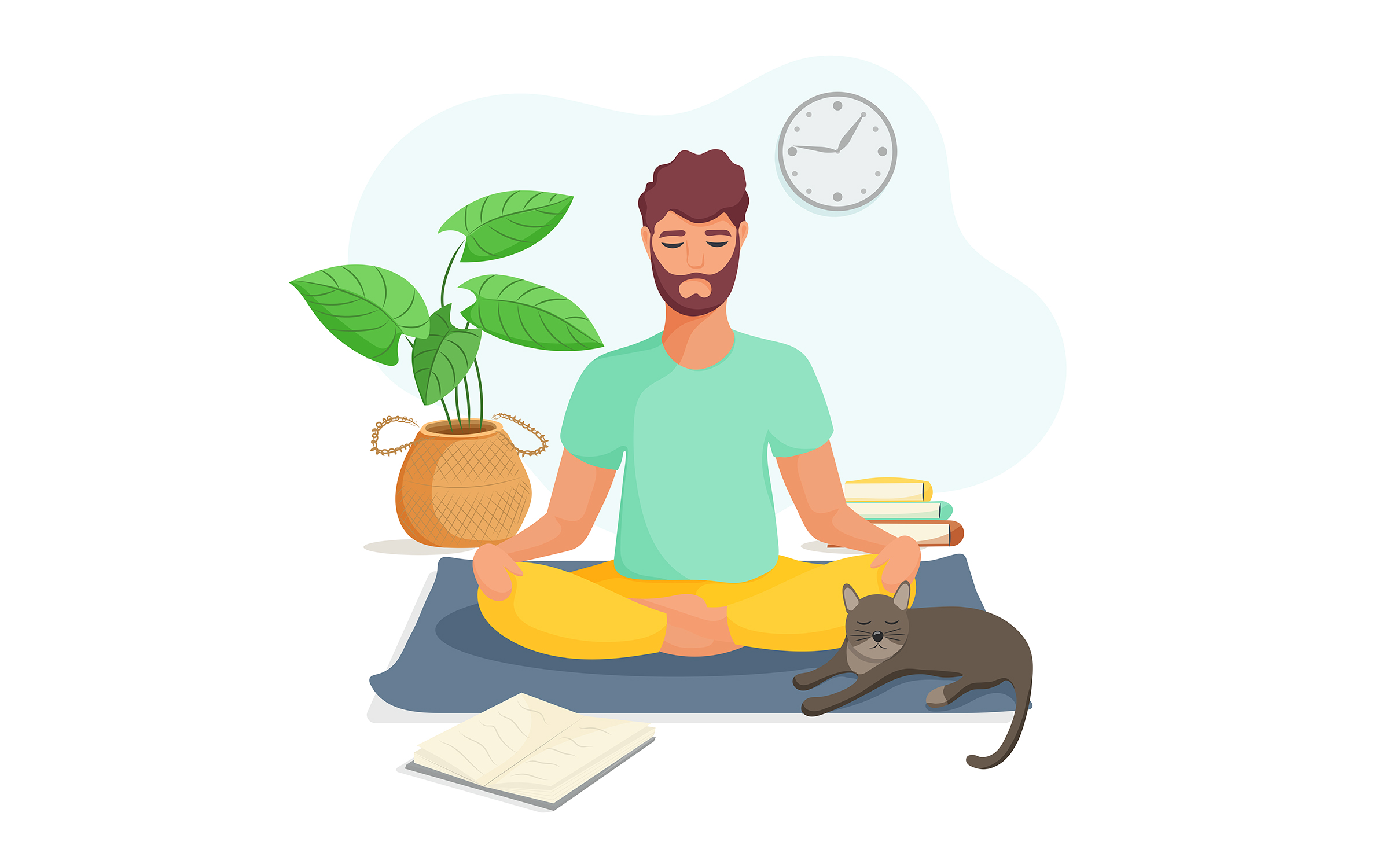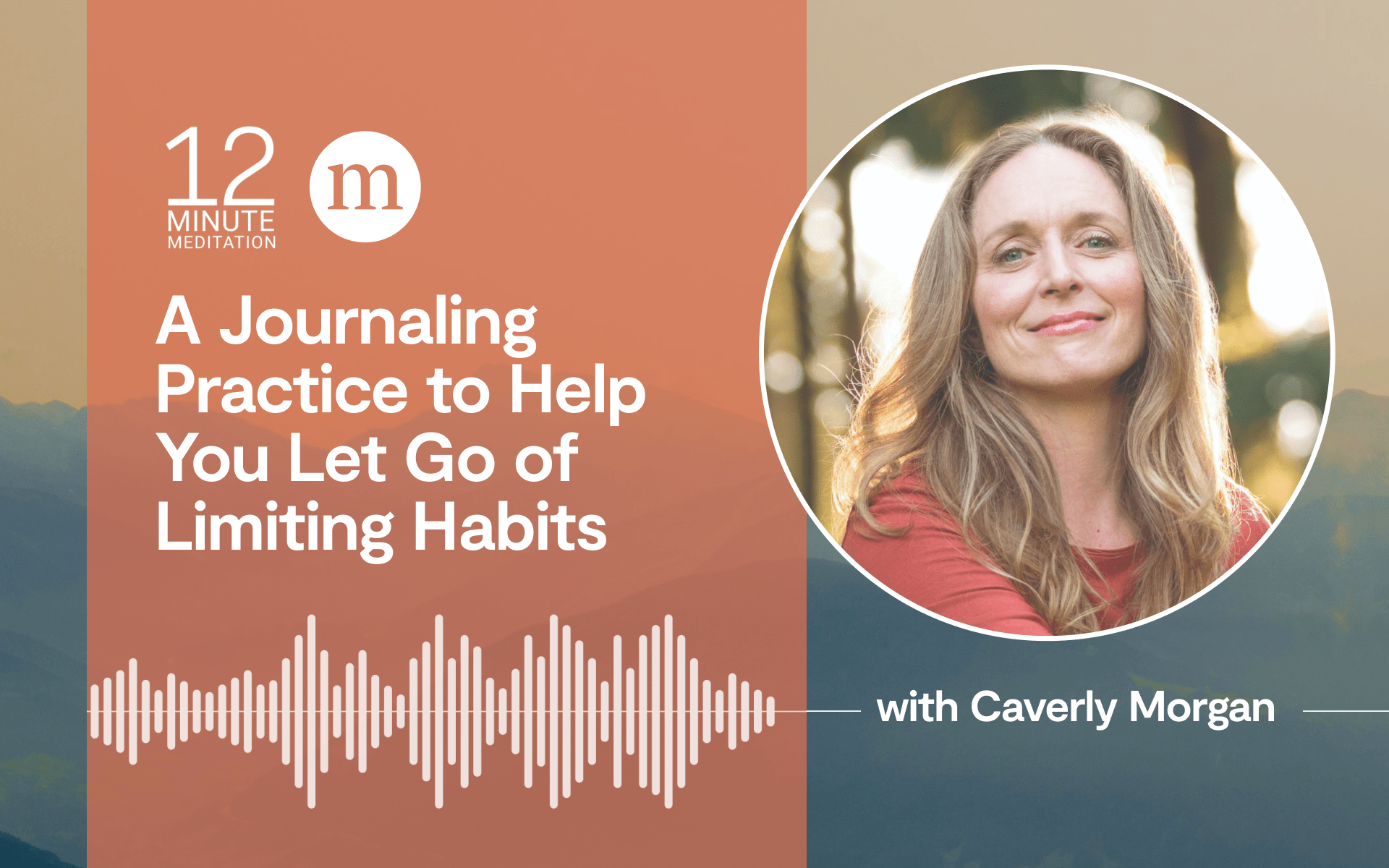When the pandemic hit in early 2020, the population was largely split into two groups: The essential worker group, who were required to actively work on the frontline, and another group that was asked to stay indoors and work from home. Healthcare professionals largely fell into the former category. The pandemic continues to be a challenging time for all, but perhaps none more so than for healthcare staff.
The way I understand these current challenges in healthcare is rooted in my experience as a physician, and particularly my specialization in the science of mindfulness, compassion, and emotional intelligence training. After experiencing burnout working on the frontline, I discovered the healing potential of mindfulness and self-compassion practice and, in doing so, realized the need for these practices within medicine. This led to the creation of the Mindful Medics: Healthcare starts with Self Care program. While I’ve spent the past five years working to optimize the health and well-being of healthcare staff through Mindful Medics, my focus on supporting those within this workforce has deepened during the COVID crisis—and I’ve observed and worked with a harrowing series of emotional shifts, experienced in a collective way by those working in healthcare during this time.
Weathering the Emotional Storms of COVID
The start of the pandemic saw staff working hard despite PPE shortages, creating an underlying fear for one’s own safety and the safety of colleagues. Some decided to move out of their homes into a hotel in order to continue serving the population, while also safeguarding their families. Healthcare professionals were having to manage this new virus quickly amid the chaos of overflowing hospital wards, rationed vital equipment such as ventilators, and the grief of losing their patients and/or colleagues.
The staff I worked with reported intense anticipatory anxiety in the hours before a shift. One doctor expressed feeling always on edge, that he could never relax and didn’t sleep so well anymore.
In the initial stages, many doctors and nurses were in sympathetic overdrive, as a collective surge in adrenaline tapped into healthcare professionals’ inherent motivation to be of service. But as we know all too well, the stress state allows us to function optimally only in short, acute bursts. A few months into the pandemic, it became obvious that COVID was not going away. The staff I worked with reported intense anticipatory anxiety in the hours before a shift. One doctor expressed feeling always on edge, that he could never relax and didn’t sleep so well anymore. For many, even in their time off, there was no true rest or recovery. Having previously worked as a doctor in emergency medicine, I know firsthand that having downtime and switching off from work are integral to clinical effectiveness, even at the best of times.
As the pandemic raged on, there was not just anxiety and exhaustion, but also the intense worry of putting family and friends at risk. One critical care outreach nurse expressed feelings of guilt at having to yet again walk away from her children to go and work a night shift, knowing all too well that when she came back home and hugged them, she could be putting them at risk of contracting the virus. And the guilt continued even when not working. Numerous clinical staff have had to take time off to self-isolate with symptoms—all the while, to paraphrase one medical staff member, feeling bad for not being there to support their teams who were stretched to capacity.
As governments started to lift national lockdown measures and open limited travel corridors around mid-2020, many people outside of the healthcare profession experienced a sense of hope that the situation was beginning to ease somewhat, including for hospitals and clinics. In reality, this couldn’t have been further from the truth. Many healthcare staff who had previously been redeployed to COVID wards were returning to backlogs of missed surgeries, missed outpatient appointments, and careful management of patient complications in those whose diagnoses or treatments of non-COVID issues had been postponed months earlier.
With all this continuing in the background, the promise of a vaccine has brought with it added pressure on healthcare management staff to create enough capacity to deliver the injections to the whole population in a safe and organized fashion.
Just as healthcare staff were beginning to consider the possibility that “maybe we will get a proper break soon,” many countries began to see the aggressive new variants of COVID making their mark. Many staff were shifted to “black rotas”—meaning their annual leave was cancelled, in an attempt to have enough cover on the ground to manage another wave of infections.
Prioritizing Provider Well-Being
This tumultuous path healthcare workers have paved through the storm of COVID—doing the utmost to keep patients as safe as possible, even when the resources were barely available to protect ourselves—has served to make more obvious what was already true: Even before the pandemic, the health and well-being of healthcare professionals was overlooked. Our years of training focused on patient-centered care, and while this is of utmost importance, I believe this care model to be incomplete. Staff well-being is key to staff engagement, which in turn optimizes the capacity healthcare systems have in meeting the demands and challenges they face in 2021 and beyond. For healthcare environments to be sustainable and consistent in the quality of care and service they provide, there must be a shift towards centering both care for patients and care for staff.
The transformation mindfulness and self-compassion has brought to my life, and to so many other providers’, reaffirms my belief and mission that healthcare starts with self-care.
In my years of training healthcare staff in mindfulness and self-compassion practices, through Mindful Medics, I have seen firsthand the positive effects that mindfulness and compassion practices have on a provider’s stress levels. Even in intensely demanding and quickly evolving circumstances, mindfulness practices help to protect us from burnout and cultivate greater resiliency, teamwork and effectiveness in the workplace. The transformation mindfulness and self-compassion has brought to my life, and to so many other providers’, reaffirms my belief and mission that healthcare starts with self-care.
Particularly if you’re a healthcare provider, first I would like to take a moment to acknowledge that we are all safer because of the work you do and to offer a deep bow to you for your service to humanity throughout this time. Secondly, I would like to invite you to take a moment for yourself to prioritize your self-care. My hope is that the P.A.C.E. Yourself practice will serve you to do exactly this.
Take Time for Self-Care with the P.A.C.E. Yourself Practice
- Permission: While healthcare providers are consistently advocating that their patients take time out to prioritize their health and well-being, we aren’t so good at doing the same for ourselves. I invite you to consider what would granting yourself permission look, sound and feel like? Might you use a phrase to encourage some self-care, such as, “I offer myself this opportunity for well-being.’’ Or perhaps you’ll physically move into a space which signals to your body and brain that it’s time to take some time for yourself—this may be the corner seat in your clinical room, a spare room in your home, or stepping out into the garden. Consciously granting yourself permission to care for yourself in this way sets an intention to do so.
- Awareness and Anchor: Next, bring your awareness to your present moment experience. Notice any areas of tension or tightness in the body. Many of you have been donning PPE on shift and this may have left some residual constriction in your body. Observe any physical sensations you have, along with your thoughts and thought patterns in the here and now. If any unpleasant emotions arise as you are doing this, I invite you to anchor in the breath, breathing fully and deeply as you stay with your experience.
- Compassion: Now that you are aware of your present physical and mental state, consider turning toward yourself with kindness. What might you do in this moment to offer yourself kindness, just as you would offer to a friend or colleague who has been working tirelessly as a healthcare professional navigating a pandemic. Might you soothe yourself with an embrace? If you like, place your hands on your heart and sense care streaming through your fingers. Might you offer yourself some words of kindness or encouragement as you are doing this?
- Envision: When you feel ready to, consider yourself stepping into the next moment and all future moments with a sense of well-being, seeing and feeling yourself having energy and vitality, stay with your exploration for as long as you can and notice if there are any shifts in your mental and/or physical state? Keep in mind that well-being is an ongoing exploration. We can always test and try moments of self-care. When you are ready to come out of the Envision stage, consider what you might carry forward from this P.A.C.E. practice into the rest of your day.
Follow a guided P.A.C.E. Yourself practice recorded by Dr Reena Kotecha here.
read more
8 Ways Healthcare Workers Can Reduce Stress
Dr. Reena Kotecha and Dr. Chris Willard offer a collection of quick tips to help other healthcare professionals rediscover moments of calm and self-care, even during a grueling work day.
Read More
Three Daily Mindfulness Practices for Healthcare Workers
Dr. Mark Bertin offers tools that healthcare providers can turn to when they’re caught up in stress, feeling overwhelmed, or simply facing the challenges of the day.
Read More
A Compassion Practice for Healthcare Workers
In this guided loving-kindness meditation, Dr. Mark Bertin offers an opportunity to bring awareness to patterns of thinking, settle the mind, and dedicate a few minutes to self-care.
Read More
